Tweezers were originally designed to help give birth to a baby at a time when many women died in childbirth. The origin of the word is derived from the Latin “forca”, which means to grasp or grab an object. The tongs shown in old documents would have served as a destructive tool rather than a tool. There was little to no care for the baby and many were stillborn before any form of intervention was considered. In the middle Ages, mechanical assistance was provided for work disruptions. Barber tools or kitchen spoons were used to help a woman give birth. Midwives were responsible for the management of forced labor at the time, but there are few written records of the process.
Surgical Forceps
THE BIRTH OF SURGICAL FORCEPS
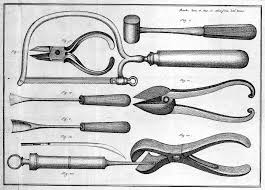
Tweezers were originally designed to help give birth to a baby at a time when many women died in childbirth. The origin of the word is derived from the Latin “forca”, which means to grasp or grab an object. The tongs shown in old documents would have served as a destructive tool rather than a tool. There was little to no care for the baby and many were stillborn before any form of intervention was considered. In the middle Ages, mechanical assistance was provided for work disruptions. Barber tools or kitchen spoons were used to help a woman give birth. Midwives were responsible for the management of forced labor at the time, but there are few written records of the process.
Surgical Forceps
Medical forceps are surgical gripping tools used during surgery and other medical procedures. Pliers are used to clamp, hold and apply pressure. Like hinged tweezers, tweezers are often used to grab or remove tissue or to attach or remove gauze, sponges or wipes.
Choice of surgical forceps:
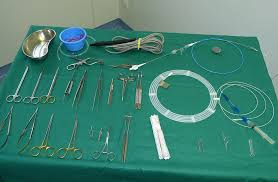
Surgical forceps can be divided into two categories, thumb forceps (often referred to as surgical forceps or fixation forceps) and ring forceps (also known as hemostat, hemostat and locking forceps).
Thumb clamps are spring clips used for compression between thumb and index finger and are used to grab, grasp, or manipulate body tissue. They are of the rattle style. For example, thumb clamps can be used to grip or move tissue or to move bandages during surgery.
Hemostatic forceps are articulated forceps that look more like scissors. The hinged clips can be supplied with or without a “lock” to attach.
The thumb clips are available with different tips. The points can be flat, serrated, hollowed out, ringed, ribbed, with diamond dust or teeth. The tips can also be straight, curved or angled. Check out the photos below. Serrated pliers (thumb pliers) are designed for use with textiles. In fact, grooves or teeth do less damage than flat pliers because they require less pressure to maintain a firm grip. Use smooth or striped pliers to remove stitches, reposition bandages, or other rags.
Common thumb clips include Adson clips, Iris clips, and Foester clips.
Depending on their function, basic surgical forceps can be classified into the following groups
1. Non-disposable tweezers:
They must withstand various types of physical and chemical effects from body fluids, secretions, cleaning agents and sterilization methods.
2.Disposable tweezers:
They are usually made of substandard materials or plastic that is thrown away after use.Surgical forceps are usually made of high-quality carbon steel, which allows them to withstand repeated sterilizations in high-temperature autoclaves. Some are made from other high quality stainless steel, chrome and vanadium alloys to ensure edge durability and no rust. Lower quality steel is used in clamps for other applications. Some disposable tweezers are made of plastic.
There are two basic types of pliers: non-locking pliers (often referred to as “hand pliers” or “pickups”) and locking pliers, although these two types are available in dozens of specialized shapes for a variety of applications. . Non-locking pliers also come in two basic shapes: hinged at one end, away from the gripping end (colloquially referred to as tweezers), and centrally hinged, like scissors. Locking pliers almost always have center hinges, although some shapes place the hinge very close to the gripping end. Locking pliers use a variety of means to lock the gripping surfaces in the closed position for ease of use or to independently grasp, lock, or lock an object.
Tweezers can have smooth tips, crossed tips, or serrated tips (often referred to as “mouse teeth”). Common dental arrangements are 1 × 2 (two teeth on one side mesh with a single tooth on the other), 7 × 7 and 9 × 9. Serrated forceps are used on the tissue; Contrary to intuition, teeth are less likely to damage tissue than a smooth surface because they can be grasped with less overall pressure. Smooth or striped forceps are used to move dressings, remove stitches, and the like.
Surgical Locking pliers/Forceps:
Locking pliers, also called pliers, are used to grab and hold objects or substances. When used to compress an artery to prevent bleeding, they are called hemostats. Another form of locking forceps is the needle holder, which is used to guide a suture needle through tissue. Many locking pliers use washers for ease of use . Finger loops are usually taken with the thumb and middle or ring fingers, while the index finger helps guide the tool.
The most common locking mechanism is a series of interlocking teeth located near the finger curls. When the clamp is closed, the teeth engage and prevent the gripping surfaces from coming off the instrument. A simple movement of the fingers is all it takes to free the teeth and release the grip ends. Tweezers are also used for surgery.
Kelly forceps:
Kelly forceps, shown closed and open Kelly forceps are a type of hemostatic forceps that are usually made of stainless steel. They look like scissors with the blade replaced by a blunt handle. They also have a locking mechanism that allows them to act like pliers. Kelly forceps can be safe (regular use) and therefore are not used for surgery. They can also be sterilized and used in operations, both in human and veterinary medicine. They can be curved or straight. In surgery, they can be used to occlude blood vessels, manipulate tissue, or for a variety of other purposes. They are named after Howard Atwood Kelly, MD, Senior Professor of Obstetrics and Gynecology at Johns Hopkins School of Medicine. The “mosquito” variant of the tool is more fragile and has smaller, thinner tips. Other varieties with similar uses, although more specialized, are Allis, Babcocks, Kochers, Carmalts, and Tonsil Forceps; all but the last bear the names of the surgeons who designed them.
Other medical forceps:
- Esophagus under direct view. They are also used to remove foreign objects.
- Alligator clip
- Anesthesia forceps
- Artery clamp
- Atraumatic forceps
- Biopsy forceps
- Bone cutting pliers
- Bone reduction forceps
- Bone retainer
- Bulldog tweezers
- Catheter clamp
- Eyelash tweezers
- Curette tweezers
- Cushion clip
- Debakey pliers
- Skin clamps and forceps
- Bandage clamp
- Ear clip
- Eye pliers
- Gallbladder forceps
- Gerald tweezers
- Hemostatic forceps
- Hysterectomy forceps
- Intestinal clamps
- Microsurgical forceps
- Nose pliers
- Obstetric forceps
- Post mortem forceps
- Splinter pliers
- Sponge tweezers
- Tweezers
- Sterilizing tweezers
- Fixing clamp for various
- Tenaculum forceps
- Thoracic forceps
- Thoracic surgical forceps
- Thumb clamp
- Tweezers
- Tweezers
- Tooth extraction forceps
- Pipe clamp
- Uterine forceps
- Vulsellum forceps
Please click the link below for the Best quality dental Forceps available in our eBay store


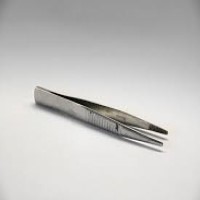
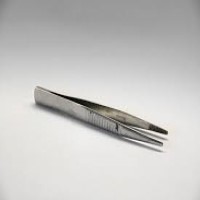
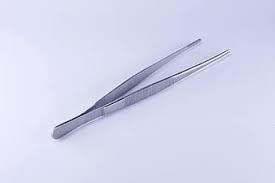
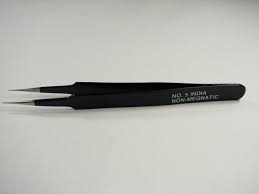
Reviews
There are no reviews yet.